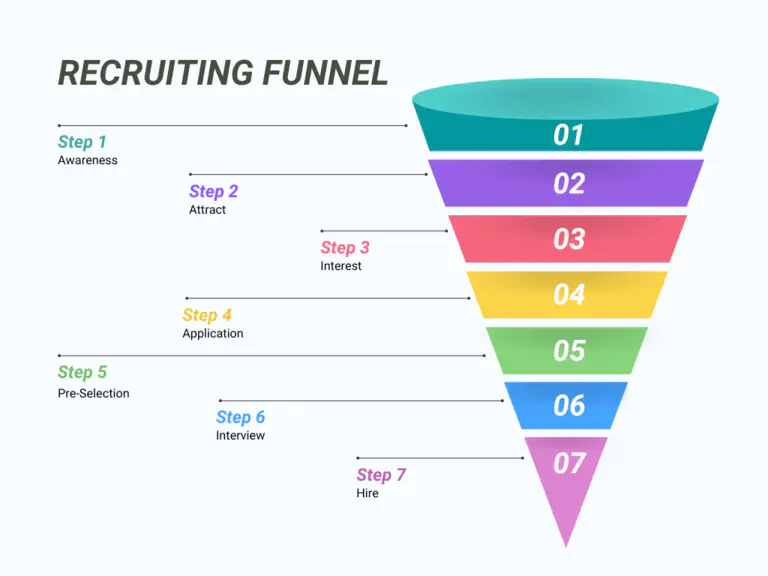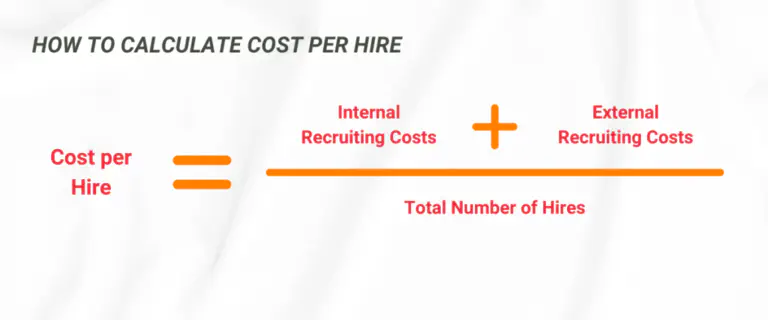How to reach the best talent online #
Recruiting is no longer a one-sided process in which companies dictate the rules. The balance of power on the labor market has shifted - and significantly so. According to a recent study by the market research institute Bilendi , every second person is convinced that they can choose their job. Skilled workers are becoming increasingly scarce, while HR departments are desperately trying to fill vacancies. The days when applicants had to scramble for jobs are over in many sectors.
Today, employees often have the upper hand: they make demands, expect attractive working conditions and choose the employers that best meet their expectations. For HR managers, this means that they have to be clever and proactive in their recruiting in order not to lose out in the race for the best minds. But don’t worry - in this article you will find out what is important when recruiting, why social recruiting is promising and which tools can help you optimally with applicant management.

Internal or external recruitment? #
Recruiting involves much more than just placing job advertisements. There are numerous approaches to recruiting staff for your company. A basic distinction is made between internal and external recruiting, each of which has specific methods, advantages and disadvantages.
Internal recruiting #
Internal recruiting involves recruiting new staff from within the company’s own ranks. Vacancies are advertised on the company’s intranet or in regular newsletters, for example, so that existing employees can apply for vacant positions. Employee referrals** also play a role: employees suggest suitable people from their own network, which often enables faster and more suitable appointments. Another internal recruiting strategy is to prepare your own staff for new positions through **targeted development and promotion**.
Internal recruitment has the advantage that employees are already familiar with the processes and structures of your company, enabling both a seamless transition and a shorter induction period. This not only saves time, but also reduces the effort required for induction. In addition, your employees will feel valued if you offer them internal development opportunities. However, internal recruiting also brings challenges. There is a lack of fresh impetus from outside, which can cause the corporate culture to stagnate. It can also lead to a kind of “company blindness”, as no new perspectives are brought in. The visibility of the employer brand also remains limited, as external presence plays a subordinate role in this approach.
External recruiting #
External recruiting aims to attract talent outside the company. In addition to classical job advertisements, modern methods such as social recruiting, in which social networks such as LinkedIn or Instagram are used, are playing an increasingly important role. Active sourcing**, i.e. approaching potential candidates directly, as well as establishing partnerships with universities or participating in career fairs are also among the measures. In addition, companies are increasingly using **creative approaches such as guerrilla marketing** to generate attention. These active strategies are supplemented by passive approaches such as the use of unsolicited applications or talent pools and the maintenance of a positive employer branding that positions the company as an attractive employer.
External recruitment has the advantage that you reach a greater number of potential applicants, which increases the chances of finding particularly qualified talent. New employees also often bring fresh ideas and perspectives, which can promote the further development of your corporate culture. However, they also require a longer induction period and there is some uncertainty as to whether they will fit into the team in the long term. In addition, the processes are often more time-consuming and costly than internal recruiting.

Recruiting phases #
Even though many companies have their own recruiting processes, there are basic phases that are essential. Each of them not only helps to find the best talent, but also strengthens your employer branding. That’s why we give you valuable tips for each phase.
- Determine staffing requirements: It is not always clear at first glance where and in which area reinforcements are needed. It is therefore worth carrying out a precise needs analysis on a regular basis. Rely on data-based decisions and evaluate which areas have the greatest potential for growth in the long term.
- Create a job description: A good job description is more than just a list of tasks. It should accurately and attractively articulate the requirements, skills needed and benefits. The key? Authenticity! Let applicants know right from the start what they can expect - from day-to-day work to development opportunities. Use keyword analysis tools to ensure that your job advertisement can be found online.
- Select applicants: Not every application meets the minimum requirements - and that’s perfectly normal. With an efficient applicant management system, you can quickly separate the wheat from the chaff. Filter not only by qualifications, but also by cultural fit if possible. After all, similar values and a matching mindset contribute just as much to team success as proven skills.
- Conduct interviews: Interviews are the perfect opportunity to assess both the technical and interpersonal skills of a candidate. Use structured interview guidelines to evaluate fairly and comparably. But also think beyond traditional questions. Why not start with a creative challenge or simulate a mini-project?
- Make a decision: All relevant information should be collected centrally and presented clearly in order to make an informed decision. An evaluation system helps you to compare candidates objectively. Involve your team at an early stage - it is often the colleagues in the respective departments who provide important insights into potential candidates.
- Contract signing: An employment contract is the first step towards working together. Show your new employees at this stage that they are welcome. A small gesture, such as a personalized message or a first insight into the team, leaves a lasting impression.
- Onboarding: Successful onboarding determines how quickly new employees settle into the company. Rely on pre-boarding to establish contact before the first day of work and create a clear induction plan. Offer informal meetings or mentoring programs to make it easier to get started.

Recruiting tools and platforms #
The search for the best talent is more exciting today than ever before - and to be successful, you need to feel the pulse of the times. Modern recruiting trends such as online recruiting open up new, creative possibilities for you to address potential candidates exactly where they are active today: in the digital and networked world. However, tried and tested recruiting measures still offer valuable opportunities to find the right talent. You can find an overview of the most common platforms and tools here:
- Job Exchange: Platforms such as StepStone or Indeed offer targeted opportunities for digital recruiting, especially for specialized skills profiles. Make sure you select the right region and sector and take your budget into account.
- Career fairs: Trade fairs are an excellent tool for presenting yourself as an attractive employer and conducting face-to-face interviews - a major advantage over purely digital measures. Interactive and creative campaigns increase your visibility - how about a smartphone charging station, for example, which encourages potential applicants with a low battery to stay longer at your stand?
- Career website: Your first impression counts! Therefore, use your career website as a central point of contact for actively seeking candidates. Interested parties should find all the important information about your company and a clear application process here. Make sure your site is always up to date and mobile-friendly.
- Social recruiting: Social media recruiting with LinkedIn and Xing is becoming increasingly interesting for companies. Recruiters and headhunters can target profiles and place job descriptions in the networks. Build a strong employer brand that is visible on social networks and attracts more applications.
- Colleges/universities: Contacts with young talent can be established through cooperation with universities. Measures such as research projects, internships or the supervision of theses are particularly effective for this. Use alumni networks to stay in touch with talent in the long term.
- Guerrilla recruiting: Creativity is key! Humorous or provocative campaigns attract attention. Why not place a job advertisement in an unusual location and use the surprise effect to stay in people’s minds? Make sure you remain authentic to create a genuine connection.
- Recruitment agency: Outsiders such as the employment agency or headhunters can help you find candidates. Use external recruiters for national searches or particularly difficult positions.
- Recruitment consultancy: If traditional recruiting measures do not lead to the desired success, it is worth looking at specialized personnel consultancies. They provide support in the search for specialists and in optimizing existing strategies.

Why a well thought-out recruiting strategy is important #
Recruiting is a multifaceted field that offers companies a wide range of scenarios and tools. From finding highly qualified talent to quickly filling an urgently needed position, there are numerous reasons to fill vacancies. This diversity makes it all the more important to think about a suitable strategy in advance that is tailored to the individual needs of the company.
A key aspect here is to distinguish between different objectives. For example, recruiting specialists with sought-after qualifications often requires a different approach than filling operational positions as quickly as possible. At the same time, the applicant experience plays a decisive role. A positive experience during the application process strengthens the employer brand and increases the likelihood of attracting the best talent.
The dynamic nature of the job market also forces companies to regularly rethink and adapt their strategies. External appointments, for example through active sourcing or social recruiting, not only bring new expertise into the company, but also promote cultural change and the ability to innovate. A well-thought-out recruiting campaign therefore offers companies a clear competitive advantage in the battle for top talent.
In addition, clear objectives and structured processes ensure that the results of recruitment are measurable. This is the only way for companies to analyze and optimize their recruiting measures and make them successful in the long term. A strong strategy is therefore not only a tool for recruiting personnel, but also a key to securing competitiveness.
This is what characterizes a good recruiting process #
A successful recruiting process lays the foundation for attracting qualified talent and also leaves a positive impression on applicants. But what exactly makes a good process? It is the successful combination of clear requirements, respectful interaction, efficiency and transparency - always in harmony with the corporate culture.
- The first step is to define realistic requirements. You should describe technical skills just as precisely as the social skills that are important for the position in question. Clear criteria not only help you to select suitable candidates, but also ensure a better fit between new employees and your company.
- Another decisive factor is the candidate experience. Applicants should feel valued by you from the very first contact. This includes respectful interaction, transparent processes and an open feedback culture. If you respond clearly to questions and provide regular updates on the status of the application process, you will create trust and leave a positive impression - even with those who have not selected you.
- The speed of the process also plays a major role. Long waiting times have a demotivating effect and can lead to promising talent dropping out. Efficient processes and prompt decisions are therefore essential.
- Transparency is another key to a successful recruiting process. Regular updates and clear information about the next steps give your applicants orientation and show that your company is proceeding in a structured and professional manner.
- To ensure fairness and objectivity, you should use standardized questions and evaluation criteria. This minimizes subjective influences and ensures that all applicants are assessed according to the same standards.
- Finally, the recruitment process should reflect your corporate culture. An authentic appearance shows what your company stands for and helps you to find candidates who are a good fit not only professionally but also in terms of their personality.

Costs incurred in recruiting #
Recruiting can quickly become a cost-intensive affair for your company. It is therefore essential that you plan your budget carefully in advance. One of the most important key figures to help you do this is the cost-per-hire. With this key figure, you can evaluate your measures in a targeted manner, plan them better and continuously optimize them.
The calculation of cost-per-hire is simple: It is the sum of internal and external costs divided by the number of new hires within a specified period. This gives you a clear overview of how much a hire costs on average and allows you to better assess where there is potential for savings or the need for investment.
Internal costs include all expenses incurred within your company. This includes, for example, the working time of those involved in the application process, investments in training and further education for your recruiters or internal programs. You should also consider additional expenses such as onboarding or team building measures. Opportunity costs should not be forgotten - the time and resources spent on induction could be used for other activities.
External costs are made up of expenses for services and measures outside your company. These include, for example, invoices for recruiting software, costs for job advertisements, your budget for employer branding or fees for agencies. This category also includes travel costs for applicants, costs for trade fairs or assessment centers.

Did you know? According to the Society for Human Resource Management (SHRM), the average cost of a new hire in the USA in 2016 was between 3,000 and 5,000 dollars. The exact figures depended on factors such as the size of the company, the industry and the number of hires made.
SeaTable as free recruiting software #
The search for new talent can quickly become an expensive challenge for companies. This often raises the question: Where can you make savings without sacrificing quality? A smart answer is to use the right tools. Especially in the area of recruiting, there are software solutions that make processes more efficient and save your budget at the same time - an excellent option for this is SeaTable .
With SeaTable, you have the entire application process under control. From job advertisement to onboarding, everything can be managed centrally and clearly. The free template for personnel recruiting allows you to collect applications via a web form in which all important data and documents are recorded directly. These are then organized and clearly arranged in a table so that you always have an overview.
Process management is also easier: thanks to the integrated Kanban board and calendar, you can organize your processes clearly and efficiently. Larger HR departments in particular benefit from collaborative working in Base. Document the status of recruiting tasks, group your to-dos and find the right employees for your team more quickly.
But SeaTable doesn’t just support you in personnel recruiting. You can also easily map the organization of job interviews and the onboarding of new team members with additional free templates. You will find everything you need for modern and efficient recruiting in one tool.
Try SeaTable and experience how easy recruiting can be. Register for free today - and get started right away!
Frequently asked questions #
What is recruiting and why is it so important?
What methods are there to attract new talent?
What makes a successful recruiting strategy?
A good recruiting strategy is authentic, efficient and tailored to the target group. It takes the following aspects into account:
- clear and appealing job descriptions
- Fast and transparent processes
- focus on the candidate experience to retain talent in the long term
- Use of modern tools such as SeaTable for structured applicant management
How do I find the best talent online?
Online recruiting offers a wide range of opportunities to reach talented people:
- Use social media platforms such as LinkedIn or Xing to get in touch with candidates directly.
- Optimize your career website to make it mobile-friendly and informative.
- Place targeted ads on job boards such as StepStone or Indeed.
- Use creative approaches such as guerrilla marketing to generate attention.
Which free tools help with recruiting?
